Stock Motos
Collection of Stock Motos at Seaweed and Gravel - available* for any further information please email us through the website "contact" link.
1970 CT 70 Honda



Classic 1970's Trail 70 complete restoration. Consignment as well. Twenty-Four Hundred obo
1971 GT350 Suzuki stock (available! private sale)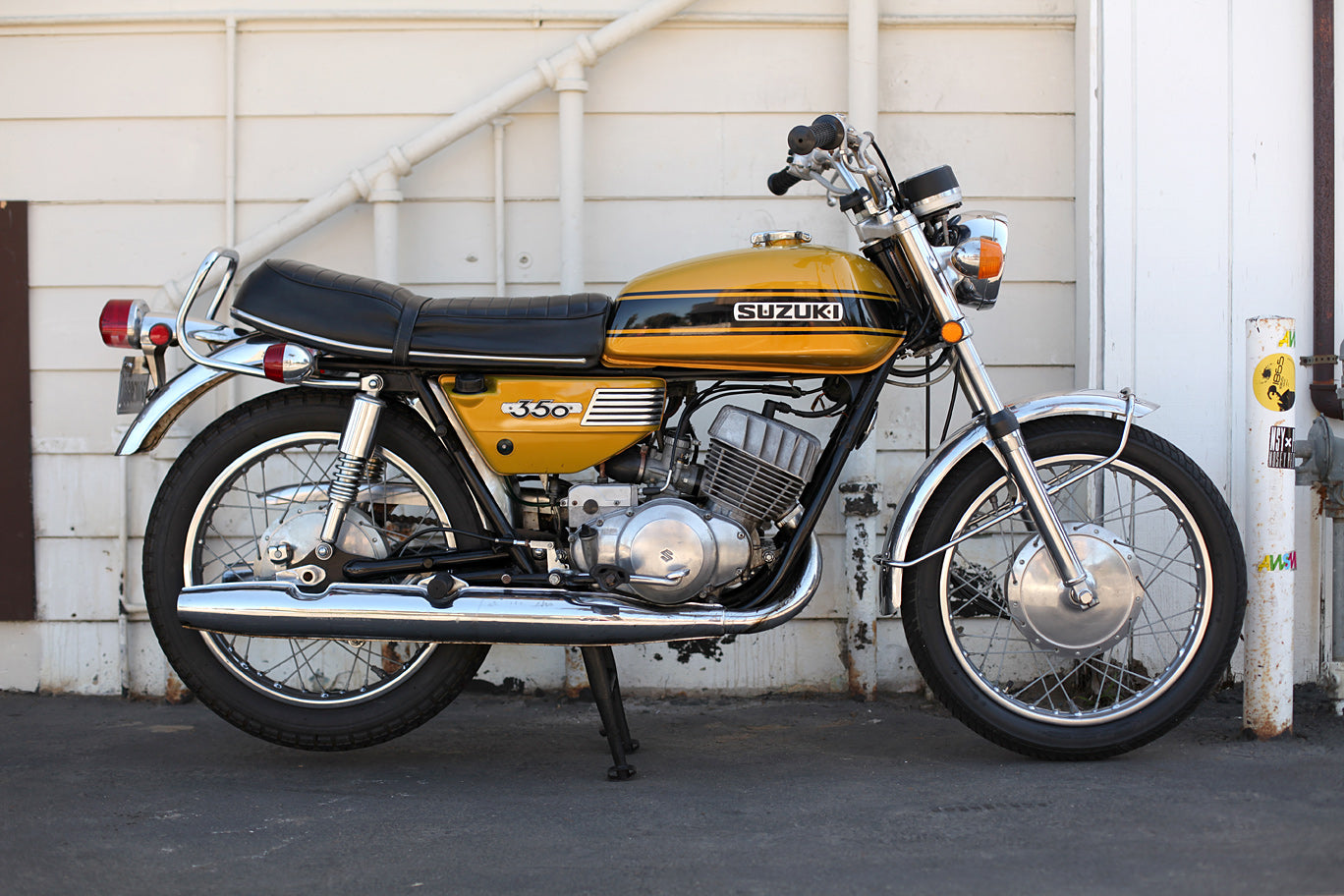

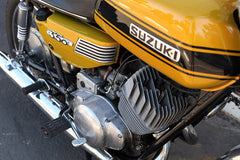
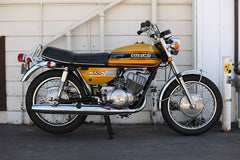
A beautiful stock GT350 two stroke. This bike is in excellent condition. Restored to its original glory by Mach 1 racing in Costa Mesa, Ca. The paint is new to match the original from '71. This bike is a great cruiser and quiet with the original pipes. The oil injectors work great.
1972 Aermacchi 350 SS by Harley Davidson
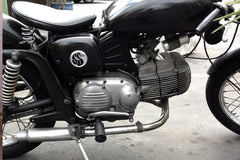
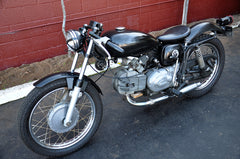


This 1972 SS350 Aeromacchi is in fantastic condition and is the owner of Seaweed & Gravel's everyday rider. It is very reliable, always starts on the first kick. The look of the bike is a bit "dirty" but it seems to fit and I haven't really made an effort to clean it up. Black on Black the bike actually has a name from the previous owner, "Gustine". This is definitely a collector bike and has many different "build out forms. In the 70's this bike used for dirt flat tracking because of the low center of gravity.
It made perfect sense in 1960. With the Japanese invasion taking hold, Harley-Davidson needed something competitive in the small bike segment. The options: further development of their 165cc two-stroke single or a completely new design — or buy a turnkey business. Aermacchi, of Varese, Italy, fit the bill to a tee: they built a sturdy and competent 250cc bike (derived from Alfredo Bianchi’s futuristic 175cc Chimera of 1955) with good performance and lots of development potential. Better yet, Aermacchi’s parent company, Aeronautica Macchi, wanted to focus on its airplane business, and was keen to divest its bike operations. Harley bought a 50 percent share.
The sporty Aermacchi Ala d’Oro (Gold Wing) featured a four-stroke overhead-valve single with horizontal cylinder and four-speed transmission, with the engine suspended from a spine frame. It looked like a good fit: overhead valve four-strokes were something H-D dealers were familiar with — no fancy overhead cams or ring-ding oil smoke haze.
The first Aermacchi Harley-Davidson Sprint went on sale in the U.S. in 1961. The speedy 250 quickly became popular in production racing, and was gradually improved over the years.
A 350cc version proved potent in GP racing, too, culminating in the 1968-1970 race seasons, when Aermacchis made up four of the top 10 places in the Isle of Man Junior TT each year and grabbed a pair of second place finishes in 1969 and 1970.
Unfortunately, little of the race technology (such as the five-speed transmission and short-stroke cylinder dimensions) made it to the street bikes, although H-D did boost the Sprint to 350cc for 1969.
Meanwhile, the engine got a cosmetic makeover, with the cylinder, head and rocker box blended together. Two versions of the Aermacchi Harley-Davidson 350 Sprint appeared: the SS with a one-into-two exhaust and low pipes, and the offroad oriented SX with a high pipe, high fenders and knobby tires.
This was a time of rapid change in the motorcycle market, however. The race for power and performance was well underway, led by hi-tech cammy Hondas and increasingly frantic two-stroke twins from Bridgestone, Kawasaki, Suzuki and Yamaha. Race versions of Yamaha’s 350s were already challenging the big four-stroke Grand Prix bikes — and winning. Could a 350cc pushrod single with its roots firmly in the Fifties hold its own? Mid-size four-stroke singles had pretty much disappeared from the streets, and offroad riding was dominated by lightweight European and Japanese strokers.
In 1970, Cycle magazine lined up a six-way comparo that included the Aermacchi Harley-Davidson 350 Sprint SS, Honda CB350 and Yamaha R5 350. In terms of performance, the SS was outclassed by Honda’s twin and the strokers, turning the standing quarter-mile at 15.9 seconds/80.6mph, compared with the Honda’s 15.2seconds/85.4mph and the R5’s 14.7seconds/87.8mph. The fastest bike in the test was the Kawasaki A7, with 14.4seconds/91.6mph. The Sprint was also slowest around the test track, although it did return the best gas mileage, 47-58mpg depending on conditions.
1977 GL1000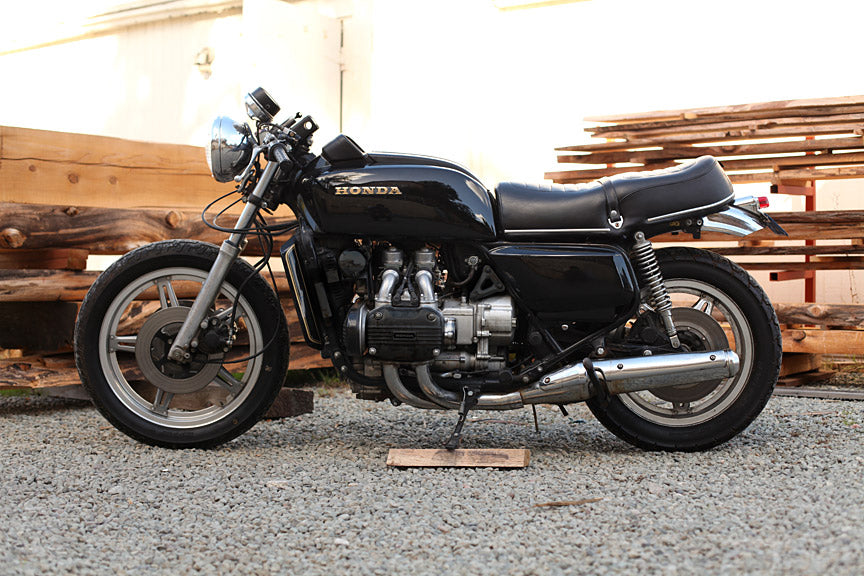
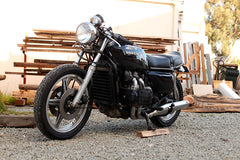



One word "GoldWing", well actually, there is an amazing motorcycle hiding underneath all that crap they originally put on those bikes. We pulled everything 'non-essential' off the bike and we were really happy with the result. This motor is very reliable and is ideal for cross country riding. The low center of gravity actually makes the bike perform in the turns better than you think it would.
The Honda Goldwing first saw the light of day at the Cologne Motorcycle Show in October 1974, as the flat-four cylinder, 999cc GL1000. While this first production version of the now famous Goldwing was ultimately deemed to be a success (it was after all the birth of a legend), it's place in the world of motorcycling was not entirely cast in stone at the beginning. Part of the reason for this was the fact that the GL1000 didn't really fit properly into any particular motorcycle class, even though it was officially tagged as a tourer. Weighing in at 584lbs dry, it was far too heavy to be called a sports bike and the upright sitting position also helped to kill of any such sporting pretensions.
1977 saw the first changes based on customer feedback to Honda (hands up all those who can remember filling out those early questionnaires at rallies) and the Goldwing got higher handlebars with neoprene grips, dual contoured saddle and chromed heat shields on the header pipes.
